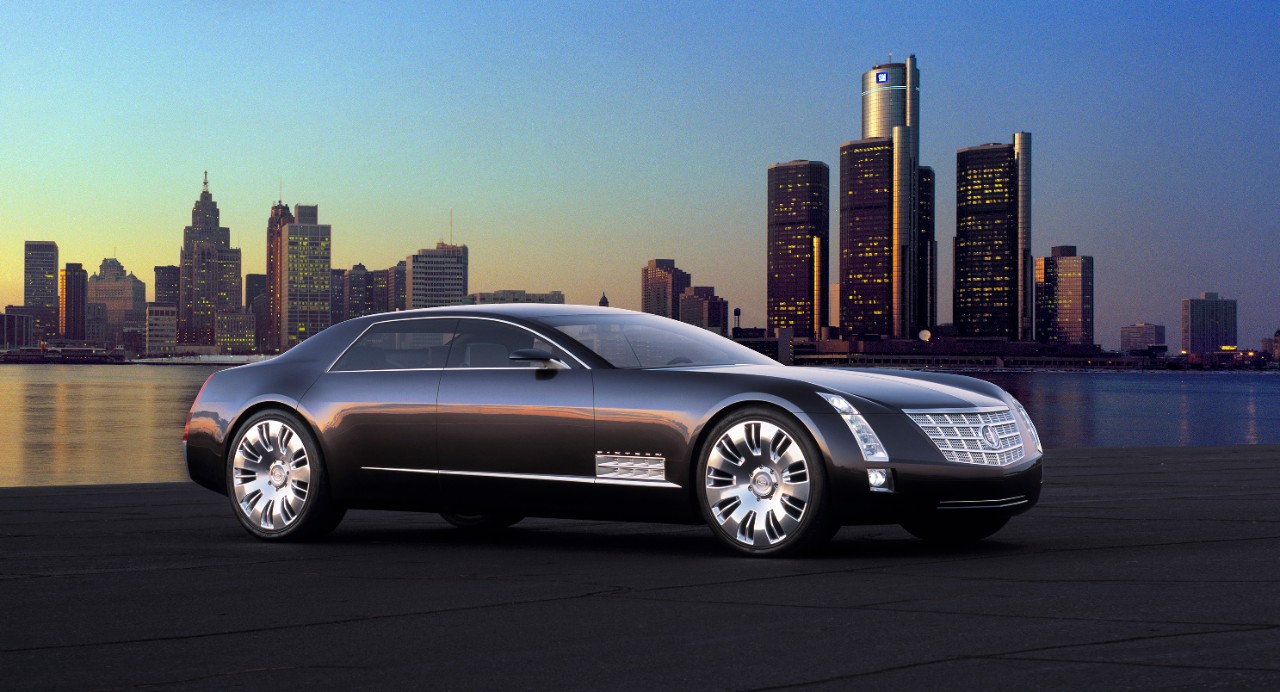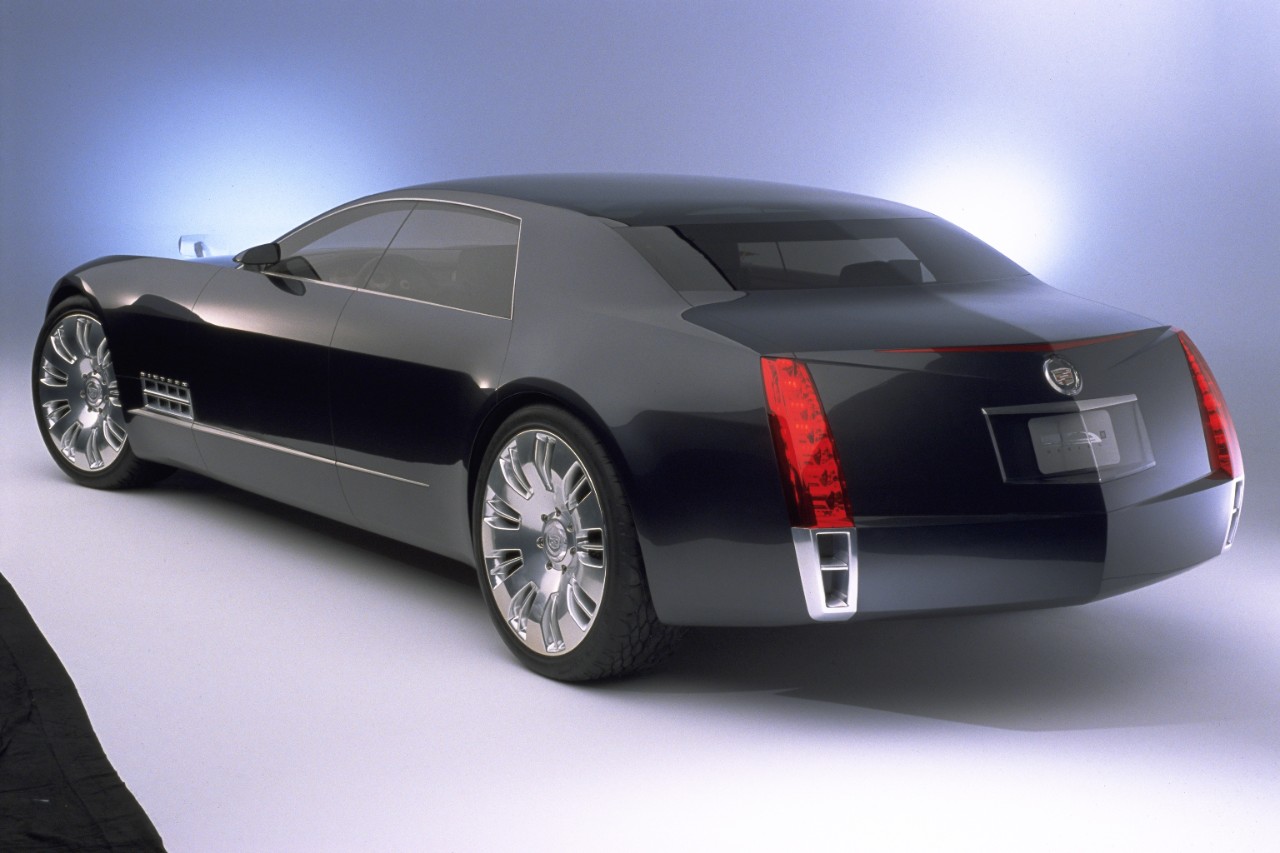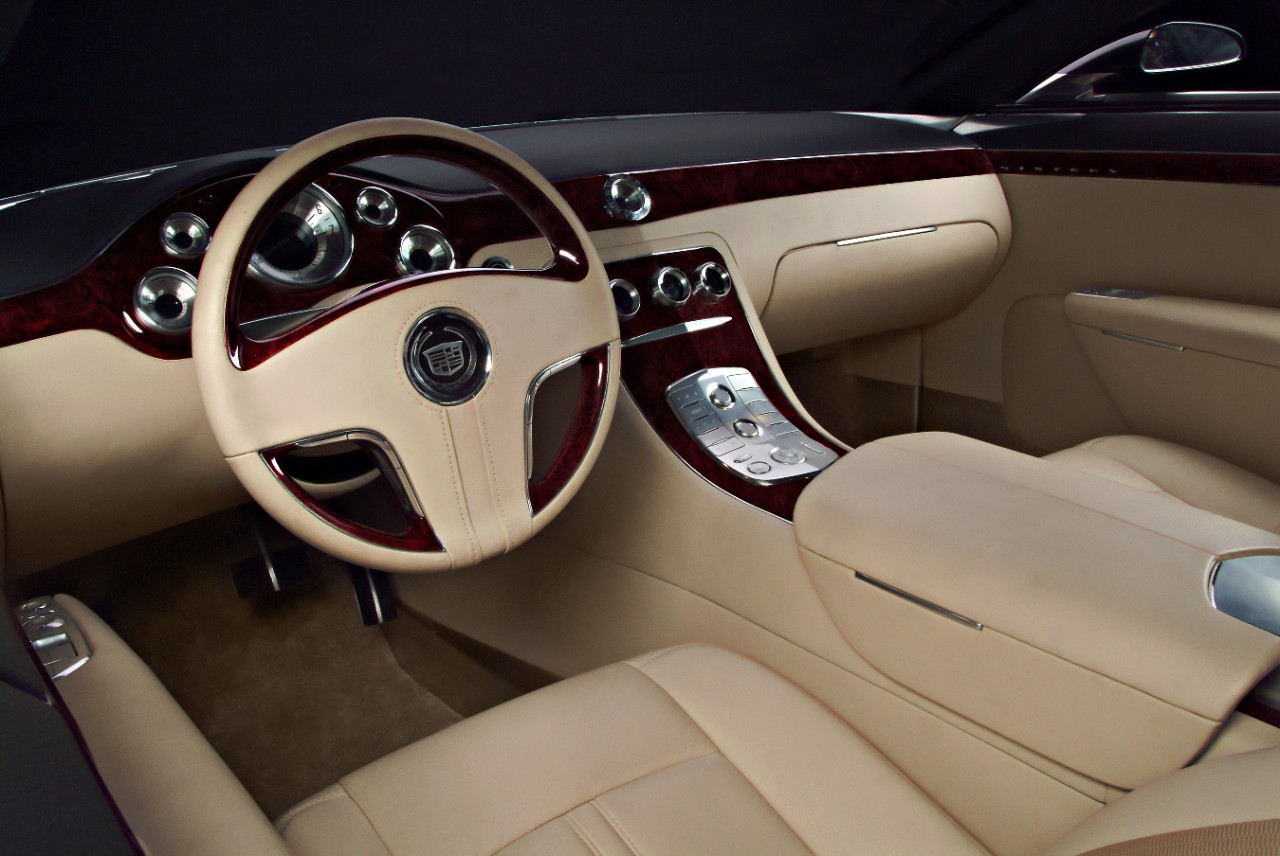By Sam McEachern, GM News
Cadillac shocked the world with the debut of the world’s first production V-16 engine for a road car at the 1930 New York Auto Show. The 16-cylinder, 7.4L engine was the embodiment of the automaker’s “Standard of the World” identity, solidifying its position at the top of the world’s luxury automotive market.
The original line of Cadillac V-16 road cars were discontinued in 1940 amid a sales slowdown partially brought on by World War II. (In fact, GM shifted all of its production to support the war effort from early 1942 until fighting ended in 1945, going more than three years without producing any consumer vehicles at all). But just over 70 years later, the Cadillac V-16 returned at the 2003 Detroit Auto Show – this time in the stunning Sixteen concept car.
Built to mark Cadillac’s 100th anniversary, the Sixteen was a svelte, low-slung four-door that measured in at a massive 18.6 feet – the perfect example of the bold, dramatic exterior designs that Cadillac has become known for. The centerpiece of the vehicle was its 13.6L V-16 engine, which sat underneath a unique dual-panel aluminum hood. Dubbed the XV16, this more modern take on the original V-16 utilized a pushrod design derived from GM’s legendary line of small-block V-8 engines and produced an impressive 1,000 horsepower and 1,000 lb-ft of torque. And yet the XV16 was 64 pounds lighter than GM’s 8100 Vortec V-8, thanks to the use of lightweight aluminum alloys.
When designing the XV16, GM’s powertrain team was tasked with developing an engine that had “outstanding quality, reliability and durability, plus turbine-like levels of noise, vibration and harshness,” according to the 2003 press release for the Sixteen. It also needed to be as fuel-efficient as comparable V-10 and V-12 engines, have class-leading specific output, and run on regular unleaded fuel. They met or exceeded all these objectives – and did so in just eight months’ time.
The opulence continued inside the Sixteen concept. GM designers set out to replicate the hyper-luxurious interiors of the post-war V-16 models that inspired the Sixteen, with seats covered in hand-stitched Tuscan leather, silk carpets, walnut burl veneer and even a Bvlgari clock in the center of the dashboard. Other appointments included a rear-seat DVD player, a Bose sound system, and crystal instrument cluster dials.
The Cadillac Sixteen never entered production – but it did serve as a successful showcase of the brand’s technological prowess and future design direction at the time. It also served as inspiration for a hand-built, ultra-luxury car that did make it into production: the all-new Cadillac CELESTIQ. And just like the Sixteen - and the 1930s V-16 models that came before it - the CELESTIQ leverages bold exterior design, advanced technologies and impressive craftsmanship to once again reinforce Cadillac’s position as the Standard of the World.

Cadillac shocked the world with the debut of the world’s first production V-16 engine for a road car at the 1930 New York Auto Show. The 16-cylinder, 7.4L engine was the embodiment of the automaker’s “Standard of the World” identity, solidifying its position at the top of the world’s luxury automotive market.
The original line of Cadillac V-16 road cars were discontinued in 1940 amid a sales slowdown partially brought on by World War II. (In fact, GM shifted all of its production to support the war effort from early 1942 until fighting ended in 1945, going more than three years without producing any consumer vehicles at all). But just over 70 years later, the Cadillac V-16 returned at the 2003 Detroit Auto Show – this time in the stunning Sixteen concept car.

Built to mark Cadillac’s 100th anniversary, the Sixteen was a svelte, low-slung four-door that measured in at a massive 18.6 feet – the perfect example of the bold, dramatic exterior designs that Cadillac has become known for. The centerpiece of the vehicle was its 13.6L V-16 engine, which sat underneath a unique dual-panel aluminum hood. Dubbed the XV16, this more modern take on the original V-16 utilized a pushrod design derived from GM’s legendary line of small-block V-8 engines and produced an impressive 1,000 horsepower and 1,000 lb-ft of torque. And yet the XV16 was 64 pounds lighter than GM’s 8100 Vortec V-8, thanks to the use of lightweight aluminum alloys.

When designing the XV16, GM’s powertrain team was tasked with developing an engine that had “outstanding quality, reliability and durability, plus turbine-like levels of noise, vibration and harshness,” according to the 2003 press release for the Sixteen. It also needed to be as fuel-efficient as comparable V-10 and V-12 engines, have class-leading specific output, and run on regular unleaded fuel. They met or exceeded all these objectives – and did so in just eight months’ time.

The opulence continued inside the Sixteen concept. GM designers set out to replicate the hyper-luxurious interiors of the post-war V-16 models that inspired the Sixteen, with seats covered in hand-stitched Tuscan leather, silk carpets, walnut burl veneer and even a Bvlgari clock in the center of the dashboard. Other appointments included a rear-seat DVD player, a Bose sound system, and crystal instrument cluster dials.

The Cadillac Sixteen never entered production – but it did serve as a successful showcase of the brand’s technological prowess and future design direction at the time. It also served as inspiration for a hand-built, ultra-luxury car that did make it into production: the all-new Cadillac CELESTIQ. And just like the Sixteen - and the 1930s V-16 models that came before it - the CELESTIQ leverages bold exterior design, advanced technologies and impressive craftsmanship to once again reinforce Cadillac’s position as the Standard of the World.